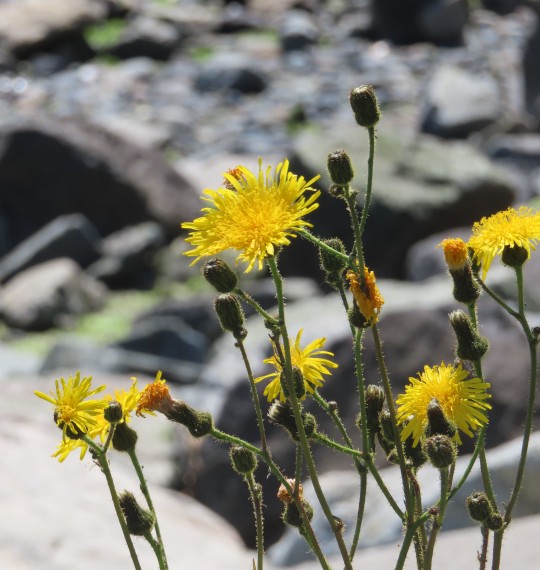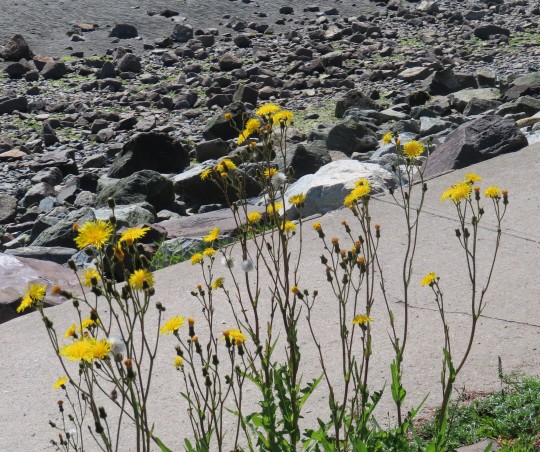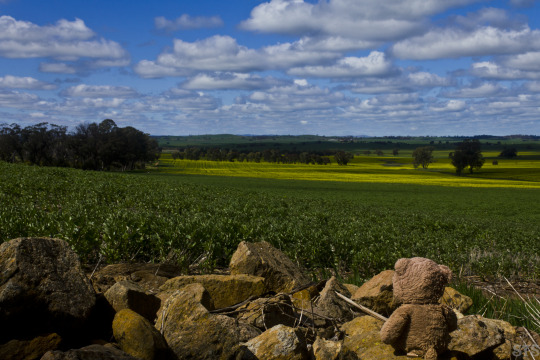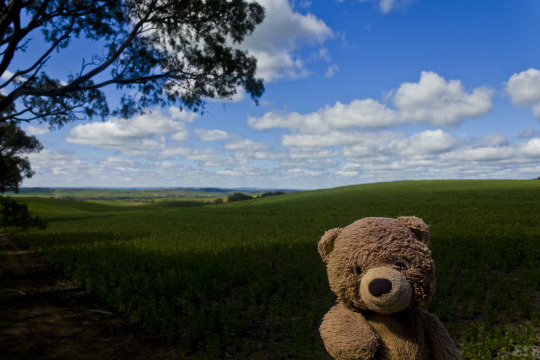#canola crop
Text

The Growing Industry of Canola Production in Australia
The industry of canola production in Australia is thriving, driven by favorable conditions, advanced farming techniques, and high demand, with increasing production and quality. Read this article to know more about canola.
#Canola Crop#healthy Australian canola crop#Australian canola#canola production in Australia#farm machinery shed#Entegra Signature Structures#farm machinery#agriculture Shed#farm sheds
1 note
·
View note
Text
Factors Responsible for a High Yield of Canola
A member of the Brassica family, canola is a cash crop grown widely for its oil, including both cooking oil and biofuel. Canola farming is a popular agricultural activity in several parts of the world, with Australia being the third largest exporter. Grown in all states and territories, canola is a vital oilseed crop in Australia. This crop is generally grown in rotation with other crops like wheat, barley, and pulses.
In this blog, we have discussed the
Factors Responsible for High Yield of Canola
1. Climatic Conditions: A cool-season crop, Australia’s climatic condition is well-suited for canola cultivation. Canola requires a moderate amount of rainfall and well-drained soils that are rich in organic matter. At the same time, canola requires a pH of 5.5 to 7.5 and is sown in autumn, from March to May, and harvested in a sprint from October to December.
2. Crop Varieties: Due to the availability of five distinct herbicide tolerance systems and two distinct canola breeding types, variety selection for canola is made more difficult (open-pollinated and hybrid). Each variety fits into farming systems differently.
3. Sowing Period: To increase canola yield in Western Australia, early sowing is the solution. In areas with low to moderate rainfall, canola is sown in April; in areas with heavy rainfall, it is sown in April and May. Depending on the area, some degree of frost danger must be tolerated to get maximum yields.
4. Sowing Options: Due to the influence of delayed seeding on output and the availability of efficient post-emergence herbicide choices, a large percentage of canola fields are dry-seeded (depending on canola type). Plant emergence and plant density may be affected if furrow fills happens after dry sowing because plants won't be able to arise from too deep. Delaying selection will probably result in a produce penalty unless the season has already broken early. To calculate the amount of the yield penalty brought on by postponed sowing, use the links contained in the sowing window portion.
5. Sowing Rate and Depth: Even though lowering seeding rates can reduce costs; you need to ensure that target plant densities are achieved. To ensure yield potential, switching to earlier sowing is becoming more common to grow canola crops in challenging conditions, often with warm temperatures and drying soil.
6. Fertiliser: The gross margin of a canola crop may be lowered by excessive input costs or decreased returns, if there’s not enough fertiliser. Compared to other crops, canola has different nutritional requirements. Using some of the many tools (including software packages, mobile and online apps, information products, and professional services), a tailored fertiliser program can be developed. To outline the nitrogen strategy, consider the crop’s potential yield, soil test results, soil type, and rainfall information. To determine post-emergence rates, nitrogen is applied in split applications. It is necessary to check soil phosphorus status for maintenance rates at seeding. At the same time, canola requires more sulphur than wheat but is equally susceptible to micronutrient deficiencies like wheat. Therefore, you need to monitor the crop within the season and conduct tissue tests to identify micronutrient deficiencies. Conducting regular soil and tissue testing is necessary to develop fertiliser programs as per crop demand.
7. Weed Control: Western Australia canola varieties have several herbicide tolerance systems. To choose the herbicide tolerance system, consider the weed spectrum and weed resistance status, crop sequence, rainfall zone, and cost.
8. Insect Control: Although different insect species can infest canola crops, applying chemical insecticide is not always necessary. Monitoring the crops through the season, allowing response time to potentially damaging infestations is essential. Canola crops can reach damaging levels if it gets infested by turnip aphids, cabbage aphids, and green peach aphids.
9. Disease Control: Monitoring canola crops for disease during the growing season is important as it allows time to consider and implement management options. To complement other management strategies, fungicides can be used but cannot be relied on alone. Other options include seed dressing, fertiliser treatment, and foliar fungicides. However, the commercially sold seed comes with fungicide seed dressing. For canola growers, managing the fungal disease blackleg is an essential consideration for which growers need to utilise different strategies to reduce the loss of yield. There are other fungal and viral diseases that impact canola crops including powdery mildew, downy mildew, and more.
10. Harvest: For harvesting canola crops, two techniques are popularly used- direct harvesting and swathing. The key difference between swathing and harvesting methods is the cutting and drying time before harvest. While direct harvesting involves cutting and threshing the crop in a single pass with a combine harvester; swathing, on the other hand, involves cutting the crop and laying it in rows to dry for a few days before harvesting.
Wrapping Up,
Achieving high yields of canola in Australia requires managing various factors carefully that influence crop growth and productivity.
Now that we have discussed the factors that influence the high yield of canola crops in Australia, it will be easy for you as an agribusiness owner to venture into the canola plantation. If you require detailed insights into canola yield crops, contact us at KG2 Australia and we will provide you with personalised assistance.
#canola yield#canola crop#kg2 Australia#agribusiness#agriculture business#regenerative agriculture#Australian farmers#Farmer Database#direct marketing
0 notes
Text

Canola fields, south west of Western Australia
2 notes
·
View notes
Text

Getting some rain to fill those pods 💃
19 notes
·
View notes
Text
Why the fuck does milk cost $6 now. I'm not talking about those giant gallon jugs, I'm talking about the little paper cartons. Six dollars? Six fucking dollars? I mean milk has always been expensive in Canada and also I need the special lactose free milk but SIX FUCKING DOLLARS???????
#cows and canola are like the only crops we can raise on our bits of arable land that isn't covered by Rock#and milk is still six fucking dollars? unbelievable.
5 notes
·
View notes
Video
Gold by Darren Schiller
Via Flickr:
Ruined farmhouse surrounded by canola, Porter's Lagoon, South Australia
#Australia#abandoned#architecture#building#country#corrugated iron#cottage#canola#disused#derelict#decaying#deserted#dilapidated#crop#farmhouse#farming#galvanised iron#gold#history#heritage#house#landscape#Mid North South Australia#morning#old#rural#rustic#rusty#ruin#South Australia
1 note
·
View note
Text
i miss collecting honey with my dad
#it's gonna be may so the bees will looove the canola crops very soon :)#im hoping to go to the apiary some warm sunday and lie on a hammock far away from said bees
0 notes
Text



Sonchus arvensis (perennial sow-thistle)
Round-up
A perennial sow-thistle enjoys a sunny day at the beach. This plant is native to Eurasia but is often described (by farmers) as a noxious, invasive weed, and is now 'naturalized' throughout North America, South America, Russia, New Zealand and Australia. Like it's relative the dandelion, it arrived from Europe during the Age of Exploration and it's probably been growing in North America for five hundred years. I have no doubt that the first seeds arrived on someone's muddy boot.
The Minnesota Wildflowers website reports, "This species is a rapid colonizer from deep, extensive underground root systems. Once listed as a Minnesota state noxious weed, it is now widely established throughout the state but is not as problematic agronomically as was once thought. Round-up Ready crops took care of much of the problem." '
Round-up (2,4-d) is a powerful broad-spectrum herbicide used extensively in modern agriculture. Round-up Ready crops include soy, corn, canola, alfalfa, sugar beets and cotton and Round-up resistant wheat is under development. Round-up has been extensively tested and under normal concentrations it is not considered injurious to human health but this research is controversial and many lawsuits are pending. In 2023, 91% of the corn, 95% of soybeans, and 94% of cotton produced in the United States were from genetically modified, herbicide-resistant strains. For everybody's sake, I hope these safety studies are correct.
A final note: as a gardener you are advised to wear long pants, a long sleeved shirt, gloves, goggles and a mask when applying Round-up, not that anybody does. Personally, I never use the stuff. I get rid of weeds the old-fashioned way - I use my hands.
#flowers#photographers on tumblr#sow thistle#Round-up#invasive plants#fleurs#flores#fiori#blumen#bloemen#White Rock beach#Vancouver
63 notes
·
View notes
Text
Témiscamingue, in northwestern Quebec, has been especially affected by the damage caused by cutworms — caterpillars that can destroy canola, potato and grain crops in a matter of days.
Cutworms are found every year in small quantities in market gardens. But producers are saying the insects have destroyed large areas of plants sown at the beginning of June, something they don't normally see.
"I don't think that in Quebec we have ever seen this level of infestation," said agronomist Josée Falardeau.
The agronomist says she's received calls from producers from Abitibi, Que., to Sudbury, Ont.
"The scale of the areas affected and the level of damage, I find that it is truly epidemiological," she added.
The company she works for has treated 6,000 acres of infested area so far, Falardeau said.
Continue Reading
Tagging: @newsfromstolenland
56 notes
·
View notes
Text








I felt well enough today to make some alien-related tattoos ☺️
They are Early Access because I haven't been able to make much for my subscribers regarding this month's theme due to my illness. They will become available to the public on July 7, 2024 🥰
SIMS 4 - ALIENS - CROP CIRCLE UPPER BACK TATTOOS AM/AF - BASE GAME
Even though these tattoos are base game compatible, they can still be used on other occult sims.
These are crop circles from around the globe.
"What are crop circles?
Crop circles are large-scale patterns made by flattening crops such as wheat, barley or canola. Crop circle artists still use boards of wood to stomp out patterns, as a National Geographic documentary filmed in 2004 illustrated. The artists hide their tracks in existing tractor-tire ruts, making it seem as if the design dropped out of the sky.
Crop circles can be simple circles or more complex patterns. Southern England remains a hotspot for crop circle artists, with masterpieces incorporating triangles, spinner shapes and crescents. They've also popped up elsewhere around the world, with one article in the Illinois newspaper Courier & Press calling them a "plague" in the state in the 1990s. ("We think it's probably just kids," Rock Island County Sheriff Tod VanWolvelaere told the paper decades later.)
Sometimes, "crop circles" appear for apparently natural reasons. The crop circles that Chorley and Bower took their inspiration from were found in Australia in 1966, though they weren't actually crops; they were patches of flattened, floating reeds in a lagoon in far north Queensland. The farmer who found them claimed to have seen a flying saucer whizzing away, but locals said such circles were common during the wet season. According to the Cairns Post, the most likely explanations were downdrafts of wind or small vortices known as willy-willies (similar to dust devils). " Crop circles: Myth, mystery and history | Live Science
TAGS
UPPER BACK
MALE AND FEMALE AGED TEEN-ELDER
30 SWATCHES
ALL SIMS
ALL OUTFITS
NOT ALLOWED FOR RANDOM - if you want to change this for your own personal use, make sure to also uncheck Werewolves in Occults so that they aren't shown randomly on Werewolves...unless you want them to.
Enjoy!
PATREON https://www.patreon.com/posts/106695765
CURSEFORGE https://legacy.curseforge.com/sims4/create-a-sim/aliens-crop-circle-upper-back-tattoos
#ts4 tattoos#sims 4 tattoos#s4 tattoos#ts4 cas#sims 4 cas#s4 cas#ts4 cc#ts4 aliens#sims 4 aliens#s4 aliens
46 notes
·
View notes
Text
Know More About the benefits of Healthy Australian Canola Crop
Lush and thriving Healthy Australian Canola Crop, nurtured by pristine soil, abundant sunshine, and optimal rainfall. Bursting with vibrant yellow flowers, it promises a bountiful harvest of nutritious and heart-healthy oil. Learn more about the benefits and production of Canola Crops. Read this full article to know more about farm machinery shed for canola crops.
#Canola Crop#healthy Australian canola crop#Australian canola#canola production in Australia#farm machinery shed#Entegra Signature Structures#farm machinery#agriculture Shed#farm sheds
0 notes
Photo




Teddy leaned back and watched as a sea of yellow swept over the green fields he was travelling by. The blooming canola crop created a bright landscape that was at first a little odd to behold but quickly brought Teddy joy in the addition of such bright colors to the palette. Don’t be afraid to extend your rest, especially, if like Teddy, you find yourself in a beautiful space.
#Teddy#Adventures With Teddy#australia#Canola#field#fields#travel#Travel Photography#travel blog#nature#plush#plushie#plushies#plush toy#cute plush#farm#farming#curator#curators#photographers on tumblr#artists on tumblr#adventureswithteddy#original photography on tumblr#original#original content#original post#original photography blog#photography#bear
254 notes
·
View notes
Text
Indigenous knowledge and food sovereignty on the prairies. Native plants and history of farming in the the northern Great Plains. Maskēko-sākahikanihk (Muskeg Lake Cree Nation), Wipazoka Wakpa Oyate (Sioux Valley Dakota Nation), and Piikani First Nation recent approaches to sustainable food production. Bison grazing and grassland health on Piikani land.
---
Indigenous peoples had lived and farmed the area centuries before European contact. [...]
Melissa Arcand is a soil scientist and associate professor at the University of Saskatchewan, and she grew up on a modern grain farm at Maskēko-sākahikanihk, or Muskeg Lake Cree Nation, north of Saskatoon. [...] Saskatchewan has more farmland than any other Canadian province. [...]
The yard is full of trees, including poplars, spruce and Manitoba maples — the fast-growing hardy species that form a protective wind-break around farm yards across the Prairies. Patricia shows me her vast garden on the south side of the yard. She has corn, squash, sunflowers, carrots, peas, flowers and shrubs of haskap and saskatoon berries. [...]
First Nation grain farmers are rare everywhere. In most cases, farmable land on the dozens of First Nation reserves across the plains of Manitoba, Saskatchewan and Alberta is rented out to non-Indigenous farmers who live nearby. That came up as a concern during a forum Arcand organized on Indigenous farming in Saskatchewan in 2018. In forum discussions, attendees resolved to take greater control over farming activities on their lands. [...]
---
Eugene Ross has a slow, soothing voice. [...] Ross is an Elder at Wipazoka Wakpa Oyate, literally “Saskatoon river people”, the Dakota name for Sioux Valley Dakota Nation. It lies at the forks of the Assiniboine and Oak Rivers, 50 kilometres west of Brandon, Manitoba [...].
Entering the plains from the rugged forest landscape of the Canadian Shield feels like dropping through a hatch in the back of a wardrobe. They are completely different worlds. West of the uber-flat Red River Valley, just beyond the town of Austin, the landscape begins to undulate, like a sloppily made bed. From there, the Prairies fold and flatten, roll and settle, in all directions, seemingly forever. Canada has 154 million acres of farmland, according to Statistics Canada’s 2021 census, and 126 million of those are in the Prairie provinces of Saskatchewan, Alberta and Manitoba. [...]
“Our Tylenol back in the day,” he says, pointing to Seneca root. From a ceiling hook, Ross takes down a string of white tubers, each about the size of a big toe: wild turnips. [...]
Production of another oilseed relative, Brassica napus, now the most common species on the Prairies, began in the 1940s. [...] In 1978, this improved crop got a new name: canola. Western Canadian farmers now grow canola on more than 20 million acres [...]. Canola is a cool-season crop that thrives in Western Canadian growing conditions. Ross knows a long list of native plants traditionally used for food and medicine that also thrive in the region. While highly unlikely that any will become the next canola, they could underpin a more diverse farming future. [...]
---
You can see Piikani First Nation from the cliff’s edge at Head-Smashed-In Buffalo Jump in southern Alberta. [...] Today that great green sea, whipped by winds from a cascade of buffalo ghosts and bisected by the Old Man River, is Piikani territory. Noreen Plain Eagle is the land manager for Piikani First Nation and its 106,000 acres. [...]
Food sovereignty is a priority. Piikani’s reliance on outside food became acutely clear in the early days of the Covid-19 pandemic when food companies, overwhelmed by supply chain issues, could not deliver their usual supply. Piikani nearly ran out of fresh food. It was a call to action for Plain Eagle. “We don’t want to be at the mercy of someone else to provide food to our community,” she says. “We want food sovereignty.” [...]
The next phase is to build a greenhouse at the school to produce a wider variety of vegetables. “We will use it as a hands-on teaching tool for students,” Plain Eagle says. “Terminology will be in the Blackfoot language.” [...] Plain Eagle also has plans to grow corn and potatoes for the community, and to think more strategically about the nation’s small bison herd. “Bison have always been part of our history,” she says, “and we’re learning how they can contribute to our grassland health.” Grasslands need a keystone grazer, like bison or cattle, to keep the grass in check and maintain grassland biodiversity. [...]
---
Text by: Jay Whetter. “The true history of farming on the Prairies.” The Narwhal. 8 October 2022. [Bolded emphasis and italicized first paragraph added by me.]
283 notes
·
View notes
Text
Download - Plants
Round 5!
Here we have another medicinal flower, as well as a crop. These are actually canola flowers - and - you guessed it, you can get cooking oil out of them!



[Notes will be copied to further posts, considering they're all the same facts]
Notes:
These are giant fields. They are meant to fill empty space in CAW/Edit town - you can use them on lots, but as stated they are quite large so if you decide to use them as lot decoration hold onto your hat because they're gonna take up a chunk of ground.
I will be making smaller/single plants to match the fields, but it takes time so please be patient.
These are speedtree plants, so they'll "follow you" when you move around. However consider that any recolors of these plants will become a default replacement unless you make the package unique. So if you would like to recolor them to suit your current world, feel free to, but please make it it's own package so they don't override the original.
These are fairly large but have low polycount - coming in at 330 polys each. That means you can have several of these in one area without weighing down your game too much. That's a win for everyone.
Please feel free to tag me if you use them in your world, I love to see them in your games! <3
Enjoy!
80 notes
·
View notes
Text
Beekeepers estimate US$ 11,000 in losses due to floods in southern Brazil
The state of Rio Grande do Sul may lose its position as Brazil's largest honey producer

João Antônio Falkoski has been a beekeeper for 35 years. He got interested in the profession as a kid by helping his father. A resident of Lomba Grande, part of the city of Novo Hamburgo, he did not see water invading his house, but the floods in May this year affected 20 of his beehive boxes. “There was honey to be harvested in the next few days. But the boxes fell and the bees drowned,” he laments.
Falkoski estimates that 1,6 million bees from his hives died. They would produce about 150 kilos of honey. “In the state, around 60,000 hives were lost due to the floods. That means a few million bees will no longer pollinate the next crop of soybeans, corn and canola from small producers. That certainly has a considerable environmental impact."
Responsible for 15% of Brazil's honey production, Rio Grande do Sul lost 10% of its bee population in 2023. The recent floods could result in zero honey production in 2024.
Continue reading.
#brazil#brazilian politics#politics#environmental justice#economy#rio grande do sul floods 2024#farming#image description in alt#mod nise da silveira
9 notes
·
View notes
Text

The lambs are bloody bleating loud! They woke me up just after sunrise... even though the field they are in is 100+ metres from my farmhouse.
James drove me to the farm yesterday (Saturday), following my eye surgery on Friday morning. My vision is still a little hazy, but clear enough to tour the farm the farm this morning, and be told about how things are progressing.
I will be staying at the farm until next weekend.
We have had nearly 390 lambs this year, the last of which were born about ten days ago. As usual, Tomas has named them all! His theme for names this year is popular music singers... Elvis Presley, Frank Sinatra and Little Richard were among the first to be born... Ollie Alexander, Billie Eilish and Dasha (whoever they may be) are amongst the newest lambs.
180 new fattening bullocks arrived on the farm about a month ago. They are very curious and playful. The English Longhorns have settled into their new home. The pigs seem happy with all the recent rain. And the chickens think everything is clucking lovely!
The dairy is doing well. We now have 450 milk producing cows, and a second robotic milking stall was installed recently.
As for the crops... we are doing better than many other UK farms, following the wettest winter and spring on record. But we need some dry, sunny weather to ripen, and harvest the early barley and wheat crops. The Oilseed Rape (Canola) harvest was better than expected this year.
Next year will once again be planting potatoes... and possibly other root vegetables. Farmer Frank is also investigating the viability of introducing glasshouse salad crops... if we can get planning permission.
9 notes
·
View notes
